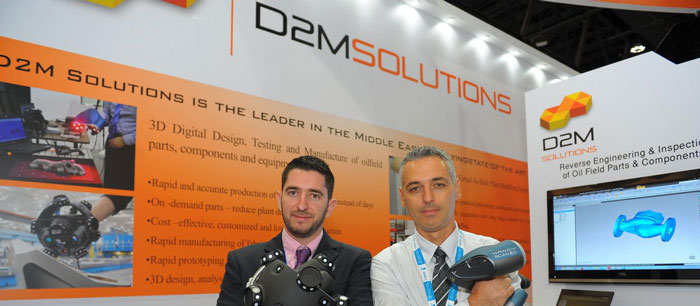D2M Solutions’ FZE division, Paradigm 3D, is to open a 3D printing factory in Dubai. The division will offer a 3D-parts-on-demand service in a range of materials from its premises in the heart of the UAE. The new factory is equipped with a comprehensive range of advanced Fused Deposition Modelling (FDM) production systems from the 3D printer giant Stratasys. Paradigm 3D aims to provide the UAE and surrounding region with localised low volume and custom manufacturing. The company states that it will have the largest capacity for 3D printing in the Middle East region.
D2M Solutions FZE has been leading the shift away from traditional manufacturing in the region for several years by supplying the latest three dimensional production technologies to advanced industries. The new 3D Printing Factory aims to facilitate local production of prototypes and 3D printed end-use parts for low volume manufacturing.

Customers can get an automatic quote, select materials and order online via the Paradigm 3D website which includes CAD file verification. Once the validity of the 3D print is approved, the production process allows the user to produce remotely at thefactory. The output is then to be shipped directly to the customer’s address.
Mr. Papantoniou added: “Our customers typically are derived from industrial companies who either have not yet got 3D printer/ production systems in-house but require fast parts or low volumes of end-use parts for specialised products, or they have 3D printers but need supplementary capacity due to a sudden peak in demand… We also have customers who need bridge tooling for limited numbers of injection moulded parts, and others who find that 3D printing of thermo-forming or blow moulds can give them the numbers of pieces they require.”
3D printed end-use parts are beginning to replace some traditional parts by offering advantages such as lighter weights acheived by the production of forms that cannot be acheived via other production methods, more cost effective production for low volumes output because of savings in materials via additive manufacturing processes, and also the potential for strength and durability by the creation of forms that are unique to 3D printing. The use of 3D printing for metals is increasing. The use of three dimensional additive processes for end products that use precious metals has particular advantages, such as in reducing the amount of materials used, and the preference for a customised nature of special gifts and the wish for individualised items produced in rare metals.
The companies spokesman iterated: “However and perhaps not surprisingly as we are in Dubai, we have some discerning customers who are simply interested in manufacturing unique high-end and customised products, of which only one unit is required – and it is mainly for the UAE and Saudi market that we can now offer gold-plated parts.”



